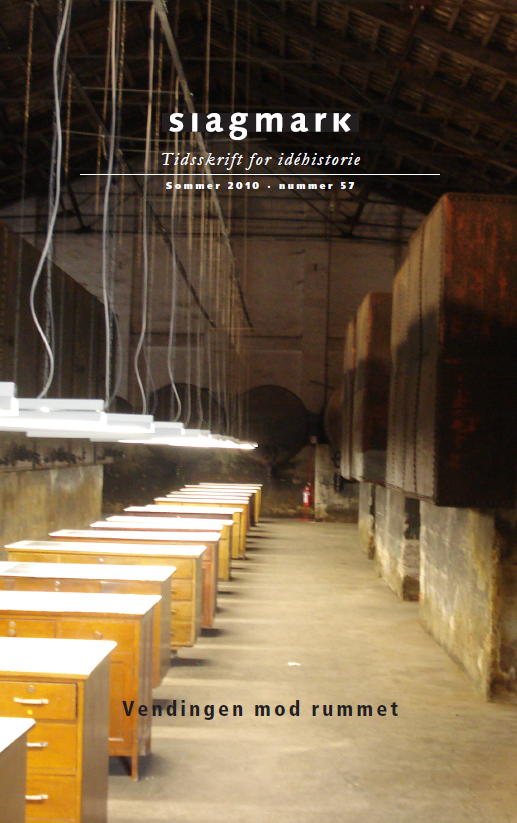Udviklingen af rumopfattelsen 1600-2000, filosofihistoriske hovedtræk
DOI:
https://doi.org/10.7146/sl.v0i57.104670Keywords:
space, schematism, emotional models, Kant, WittgensteinAbstract
The paper tries to give a survey of the historical development of physical and philosophical ideas of space after Descartes and Newton. A special focal point is Kant´s idea of a schematism and three kinds of afterglows of this idea; the notionof a work of art, the notion of scientific model, and finally the unity of action and
space in phenomenology. The paper suggests that works within the recent spatial
turn perhaps have failed to rethink the unity between material, social, and personal
relations, and that an assessment of the later Wittgenstein´s micro-phenomenology
could pave the way for a stronger “second spatial turn”.
Downloads
Published
2018-03-09
How to Cite
Brock, S. (2018). Udviklingen af rumopfattelsen 1600-2000, filosofihistoriske hovedtræk. Slagmark - Tidsskrift for idéhistorie, (57), 155–168. https://doi.org/10.7146/sl.v0i57.104670
Issue
Section
Tema





